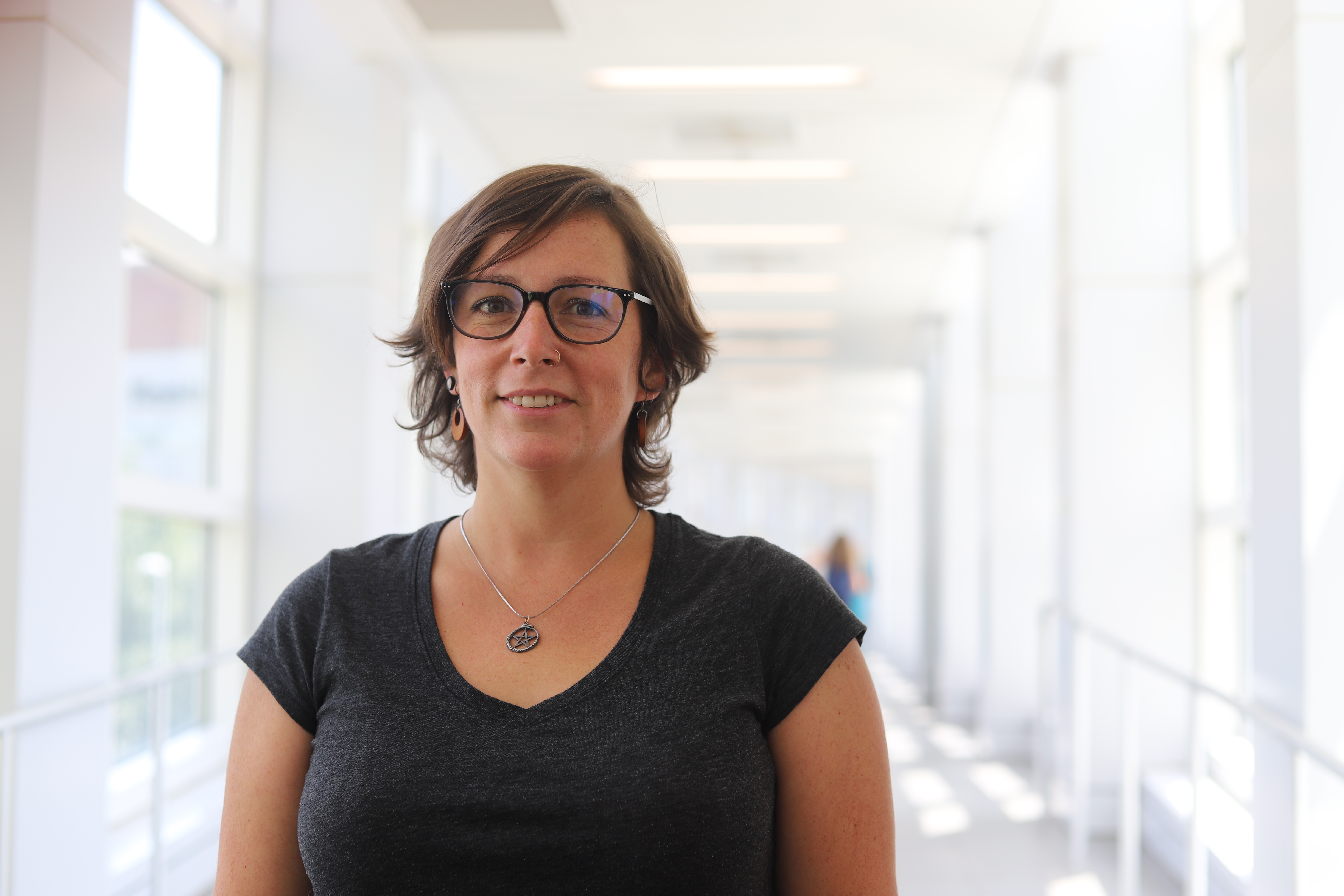Joy Miracle works with Anthony Sinai, PhD, in the UK College of Medicine Department of Microbiology, Immunology, and Molecular Genetics. In the following Q&A, she shares her experience studying parasitic infection and how mentorship in Dr. Sinai’s lab has helped her develop as a scientist.
Q: Can you describe your current research projects? What is your role, what are you studying, and what are you trying to accomplish?
A: The grant-funded project I work on is involved with the study of chronic toxoplasmosis at the level of individual parasites within the cysts that house them. Chronic Toxoplasma gondii infections are found in about one-third of the world’s population, so it’s an important disease to understand. The field’s understanding of this aspect of the infection has shifted recently as a result of Dr. Sinai’s lab’s research revealing that what were once considered dormant parasites are actually actively replicating, albeit more slowly than the form associated with the active infection.
Reactivation of the chronic disease is a serious cause of concern for immunocompromised patients when the latent infection can cause severe illness and death, so we’re looking at various physiological readouts within the slow-growing parasites (called bradyzoites) in cysts to develop the capacity to understand and treat disease. We are also developing quantitative approaches for drug testing, since the only drug available to patients does not clear all of the cysts that evade the immune system. A significant part of my work in this research involves the growing and harvesting of cysts, and using immunofluorescence assays (IFA) to image and quantify various characteristics of cysts and bradyzoites.
Additionally, we work with Abhijit Patwardhan, PhD, and his graduate students in the UK College of Engineering to develop and utilize the quantification software that aids in the increased throughput of the data we collect from cysts. As lab manager, in addition to the grant-funded research, I provide general lab support and management to keep everyone’s research running as smoothly as possible.
Q: Why did you want to pursue a career in microbiology research?
A: I previously worked in a privately-owned mosquito control laboratory, and when the company closed last year, I was drawn to one of my strong interests from college: microbiology. I was an animal science major, and I keep animals on my hobby farm outside of work, so parasites play a larger role in my life than most Americans.
Working on the molecular level is new to me, so I’m excited to be learning so much in such a short time. I love biology because it is always applicable to our lives, while yielding constant questions for new discoveries.
Q: What are your future career goals?
A: For now, being rather new to microbiology, I’m content to grow my skills while supporting the lab’s research. Toxoplasmosis is an important disease to understand worldwide, and I’m happy to be a part of the community working on it, members of which I got to meet at a conference in California last summer.
Q: Why did you join UK? Are you from Kentucky, or did something else draw you in?
A: I grew up in Georgia, and that’s where I attended college. I’ve lived in Kentucky almost 20 years now, and Lexington feels more like home than any place. Kentucky is a beautiful area to live, and UK has been a great place to work so far.
I worked in plant and soil sciences in 2005-2006 and have only been back in research since December 2021.
Q: How would you describe Dr. Sinai as a mentor?
A: Tony has been a mentor from my first day, with patience and generosity. He has vast knowledge and an excellent ability to tell a complex story in a comprehensive way that not only informs, but inspires. I appreciate how he encourages his team to think and follow our own questions, not being afraid to make mistakes.
In science, even “failures” are learning opportunities, and Tony always encourages us to learn from every experiment. Our lab is a close-knit group, we support each other, and I enjoy my time in the lab.
Research reported in this publication was supported by the National Institute of Allergy and Infectious Diseases of the National Institutes of Health under Award Numbers RO1AI145335 and R21AI150631. The content is solely the responsibility of the authors and does not necessarily represent the official views of the National Institutes of Health.
